
09.11.2015
The history of TEOR/éTica, its role as an experimental center for art and politics in Central America, and its relation to academia.
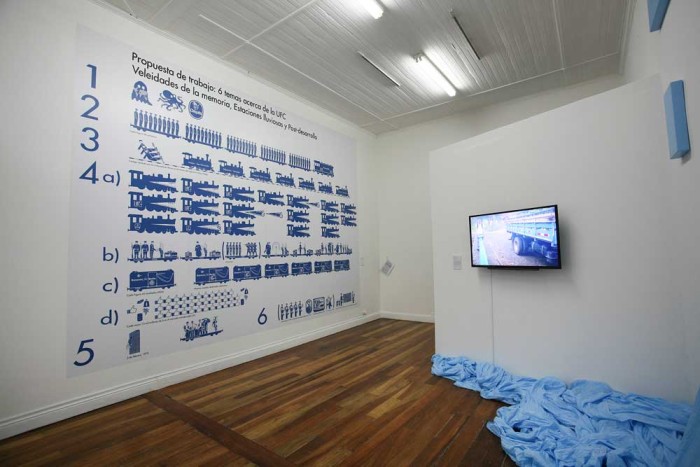
Following the pulse of the contemporary is no easy task. The present moves and one moves with it—and in it—so at times it is necessary to remove oneself from the scenario to become an observer and manage to understand the real needs of those who inhabit and construct reality. Furthermore, time moves differently in diverse latitudes—and yet we are made to believe it is homogenous and totalizing. It is a mistake to assume that the conditions—political, economic, cultural—aspired to in cities or countries of the so-called “first-world” should be the same in other places with their own distinct developments and histories. The particularities of every context set their particular paces, which directly affect cultural practices.
In our Latin American contexts, thinking about ourselves has been a clumsy process. When articulating artistic practice, foreign strategies have been wrongly adopted, repeated and abandoned. Often these models do not respond to conditions in Latin America, nor are they consequent with local artistic production circumstances. A colonial attitude that looks to formats and proposals developed in “centers,” with different timeframes and dynamics, continues to be perpetrated. In many cases, these adopted models turn out to be obsolete and dubious—even in the places where they originated from—which becomes critical considering that in Latin America they are established in a practically anachronistic and dislocated way.
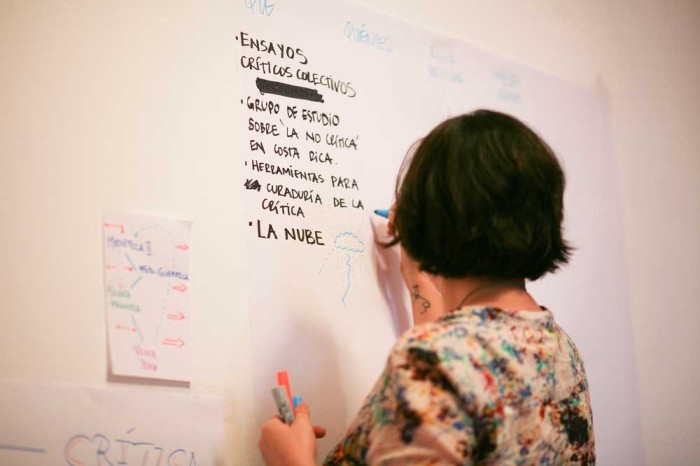
These complications aggravate in Central America. If Latin America was a periphery, then Central America was the periphery of a periphery. When it came to art produced in the region, previous to the 1990s little information was available and only limited research material existed. There was no notion of creating links to similar spaces, or to look within the region to articulate other research and exhibition models. Furthermore, at the level of higher education, there was a clear lack of interest in studying local experimental art practices, something that to some degree exists even today. Somehow the academy had failed. This “invisibilization” was perpetrated from the very places where knowledge was generated, in part from important “centers” outside the region, but also internally in each of its countries. The void had to be filled using other means—exploring other ways of doing.
It is within this fragmented system that TEOR/éTica emerged in San José, Costa Rica. Founded by Virginia Pérez-Ratton in 1999 as an independent, non-profit space focused on contemporary art practices from Central America and the Caribbean, it was a way to continue the task of making visible and positioning art from Central America, which began during Pérez-Ratton’s time at the Museo de Arte y Diseño Contemporáneo in Costa Rica. At the time, through the use of various strategies, Pérez-Ratton sought to dismantle the conflictive notion of center/periphery. For her, it was necessary to create our own center and understand one another. Astutely, she understood that what was needed was not only a space for the region’s contemporary art; but to foster conditions that would allow production to flourish. This meant generating and articulating a kind of thinking that was coherent with local production and conditions.
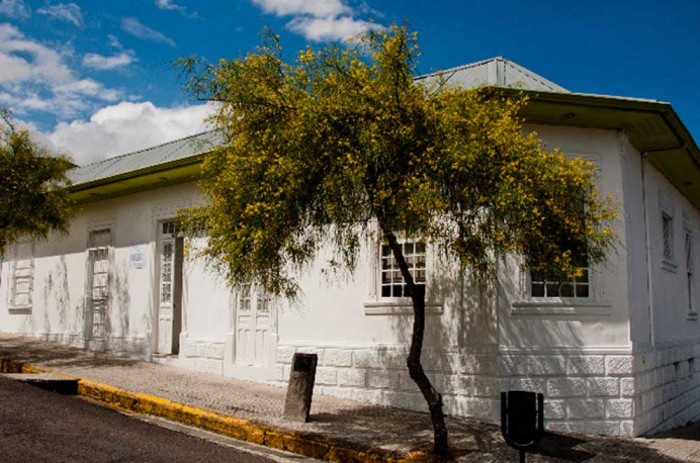
Both under Pérez-Ratton’s direction and after her absence, TEOR/éTica has constantly sought to propose its own models. When movement is constant and practices are as dynamic and varied as they are, reality demands an unceasing re-imagination of the ways in which knowledge is constructed. Throughout sixteen years of operation, this has been the institution’s task, while being protagonist, observer and catalyst of contemporaneity in Central America as understood from the arts.
Being the institution’s main focus, exhibitions are considered spaces for fomenting discussion and generating research. On one hand, it has presented work by artists from all over the world, whose oeuvre could resonate with local practices. The exhibition entitled Infancia: Louise Bourgeois. Gráfica Reciente (Childhood: Louise Bourgeois—Recent Graphic Works), curated by Paulo Herkenhoff, was mounted in 2002. Not only was this a chance to bring local audiences closer to the work of one of the twentieth century’s greatest artists, but was also shown in a context where art by women and issues of gender and sexuality have had great impact.
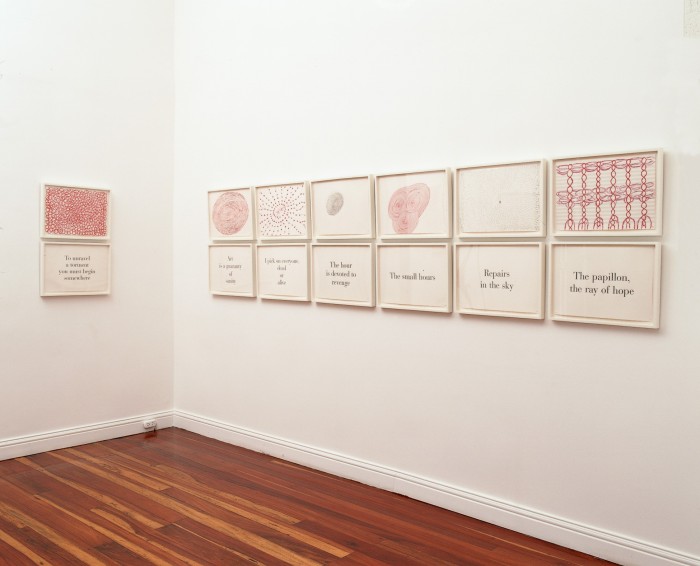
To an equal degree, collective shows are often a way to explore local realities and understand their repercussions and responses on a global level, or to recuperate, and explore, the region’s historical facts from other perspectives. Along these lines, Todo Incluido: imágenes urbanas de Centroamérica (All-Inclusive: Urban Images from Central America; 2004), curated by Santiago Olmo and Virginia Pérez-Ratton, presented another vision of the countries of the Central American isthmus by focusing on their cities. In countries generally associated with tropical paradises, their cities are often ignored or forgotten, despite being spaces of exchange and contradiction that propitiate and contain important cultural aspects. Presented at Madrid’s Conde Duque cultural center in 2004, the exhibition was a way to dismantle myths and question the advertising-related image of Central America that is often sold to European, US and Canadian tourists.
In 2014, as part of an invitation on the part of the Tate Modern to mount a show in its Project Space, TEOR/éTica presented the exhibition Una crónica de intervenciones (A Chronicle of Interventions), both in London and San José. The show—curated by former TEOR/éTica curator Inti Guerrero, and Tate Modern’s Shoair Mavlian, explored the conflictive history of the US’s repeated interventions in Central America. Eight artists’ visions made a reading of different military, economic and cultural interventions that in some ways continue to affect Central American nations’ present-day development.
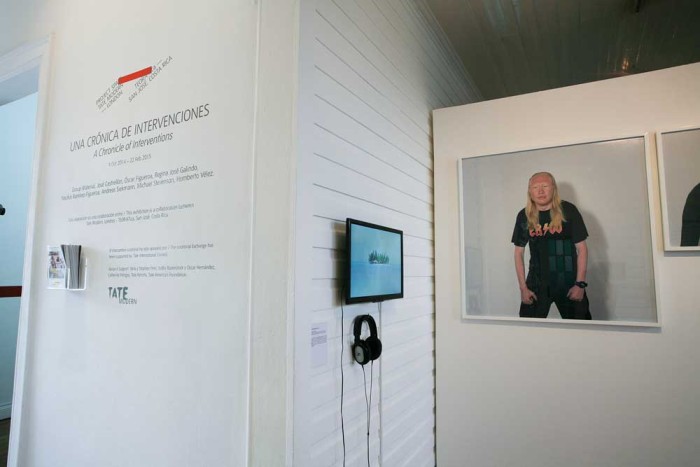
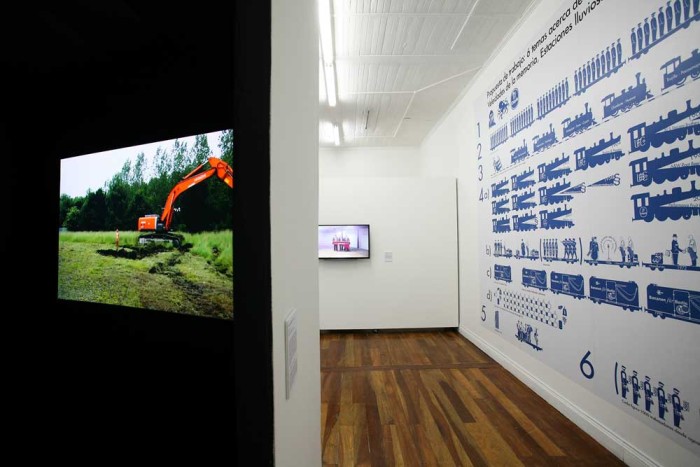
Aware of the need for written memory that would complement these exhibition-related efforts TEOR/éTica launched a series of publications. They served a research function; in addition to exhibition catalogues, the institution published theoretical volumes on the situation of contemporary art in Latin America and an effort was made to recuperate historical figures such as Margarita Azurdia, Emilia Prieto, Rosa Mena Valenzuela and Rolando Castellón—who in many ways had defined contemporaneity in their respective countries yet had never had their work compiled in a major publication.
In light of the region’s lack of art criticism and in an effort to fill a persistent theoretical void, TEOR/éTica is currently focused on activating the organization’s publishing efforts in a more constant manner, first and foremost through a line of publications that will anthologize local writings by important Central American and Caribbean thinkers.
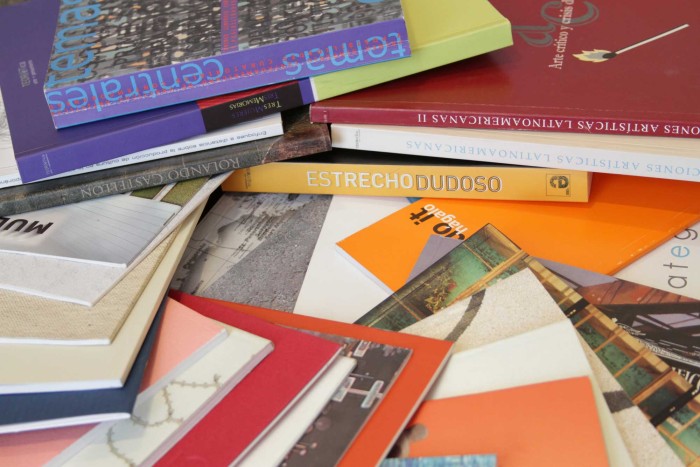
The publishing program is part of a larger project consisting of a specialized library and the institution’s archive, which holds documentation of TEOR/éTica’s work as well as information about artists. Lado V, Centro para la Investigación Virginia Pérez-Ratton,”a project complementary to TEOR/éTica inaugurated in 2012, gathers these resources, in an effort to not only create documentary holdings, but proposing ways of using them to produce and transmit knowledge based on research, experimentation and artistic training.
Both TEOR/éTica’s space and Lado V, two historic residences in San José’s Barrio Amón quarter, are forums of constant exchange, where key figures from the art world and other fields share knowledge and experiences through conversations, workshops and seminars that reach out to varied audiences and discuss issues that go beyond art in itself.That said, the institution has recently begun a process of questioning and self-analysis that puts all these efforts into perspective. Considering what is being built for the future, and the current program’s real impact, we have begun to re-think the spaces of action that were previously proposed, analyzing both successes and mistakes.
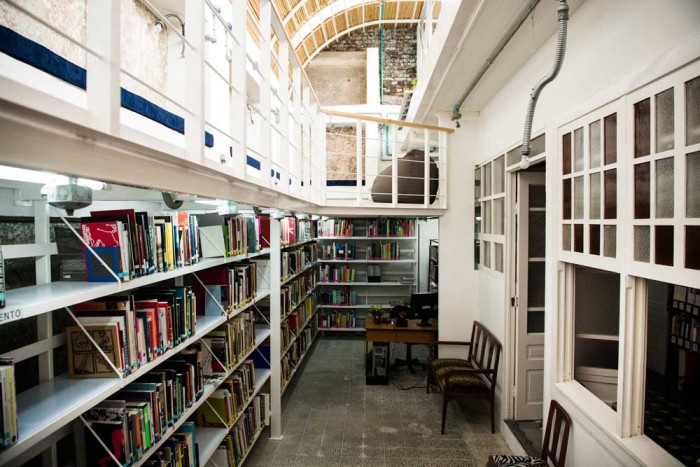
For this reason, TEOR/éTica proposed opening a dialogue to build something in collaboration. The first of these initiatives was the workshop entitled Mapa de Relaciones: contextualizar las prácticas curatoriales (Relational Map: Contextualizing Curatorial Practices). Invited by TEOR/éTica and over the course of three intensive sessions, public-museum curators, artists, independent curators, university students and philosophy professors, among others—all active participants in the Costa Rican art scene—shared preoccupations and common interests from which to posit possible work agendas.
The workshop was an initiative on the part of TEOR/éTica with Miguel López as recently named Curator-in-Chief, who invited Mexican curator Sofía Olascoaga to facilitate a collective mapping of local curatorial work. The idea was to problematize the place we currently find ourselves in and to imagine what forms of action and intervention become necessary in light of specific priorities/urgencies. In this way, from TEOR/éTica we were directly addressing a situation we perceived following a lack of response to an open call for curatorial proposals to be exhibited in our space. Not having received a single project proposal the question of what lay behind such a situation arose, while it also became critical to think about how to tackle the matter and try to provoke more movement in a country and a region that has no curatorial study programs. This apparent void, far from being seen as a failure, was understood as both a symptom and the need to go deeper into a real understanding of the art scene we work with while simultaneously analyzing the institution’s present role.
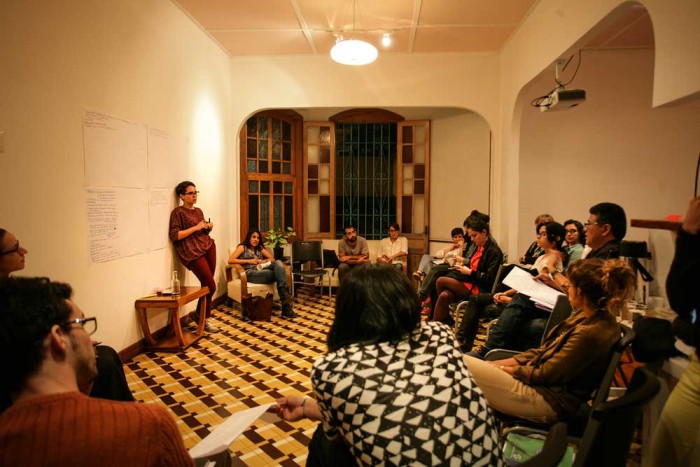
During the workshop it became clear that traditional ways of curating were neither a desire nor a current priority. On the contrary, alternative formats and possible projects emerged, with an interest in historical research, critique, education and experimental artistic practice as active agents in a wider context. Thus a network of collaborations was established thanks to shared interests and visions that imagined ways of doing from a utopian and wishful place. While it was acknowledged that moving what had been discussed to a practical level presented a major challenge for the future, the initiative was nonetheless a call to action for those present. No other institution in Costa Rica had proposed to re-think and re-posit the curatorial function as a means of activating desire. For TEOR/éTica the urgency of the situation was obvious, especially in light of a generational change, the absence of certain figures and the appearance of independent initiatives and new artistic impulses that go beyond the visual arts. This experience is a first step towards constructing a proposal that more directly considers informal curatorial and educational models that nonetheless still have the necessary rigor and complement a program designed to enrich the existing art scene.
Thus the institution can be considered a kind of alter-academy, one that generates thought from formats that are typical of an exhibition space, but that at the same time seeks to create its own models of doing and researching local practices and realities. At the same time, it also aims to connect with a global community, understanding art as part of a wider knowledge and communication system. The work is constantly changing and ideally originates from constant analysis, always redefining the role of the institution in its given context and timeframe in order to develop coherent programs.
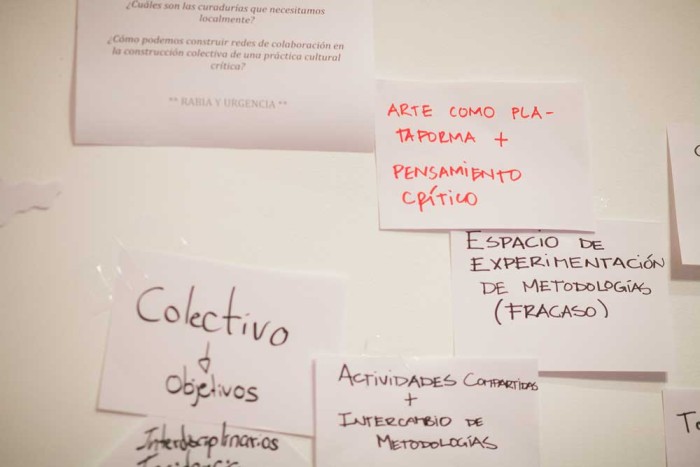
That said, it is wise to be aware of staying on the margins of institutionality and academia, taking care not to become yet another agent that cements learning and knowledge-dissemination processes, or that overly formalizes ways of thinking and accessing information. Often, when institutions solidify, there is a risk of indulging in conservative “vices” that limit looseness, openness and the ability of self-criticism that should ideally be part of any art space, particularly those that work with experimental artistic practices amid the uncertainty of the present. This is a concern to which TEOR/éTica has paid particular attention, by assuming that what is proposed is by no means a totalizing endeavor, nor that its methodologies and proposals are definitive.
TEOR/éTica is merely one strategy and operates knowing it will not resolve every need or void that may arise. We are part of a system that ought to grow with other active spaces that also propose to radicalize practices by exploring other ways of doing, thinking and understanding ourselves. In different ways, there is an aspiration to create collectivity as a means of creating knowledge jointly and developing actions that expand that network of collaborations. If there is one thing that characterizes TEOR/éTica’s spirit is a desire to spread this aspiration, thus proposing alternative forms of creating knowledge and understanding.
Comments
There are no coments available.